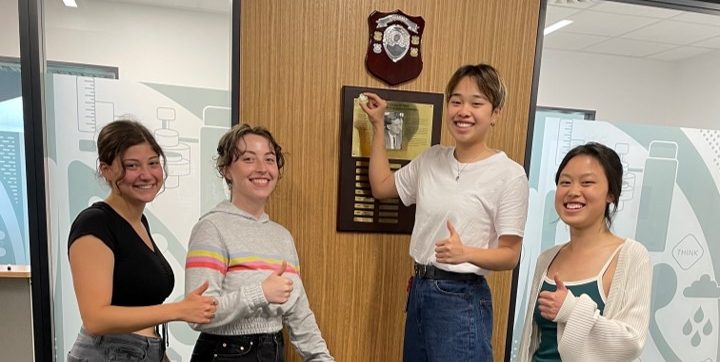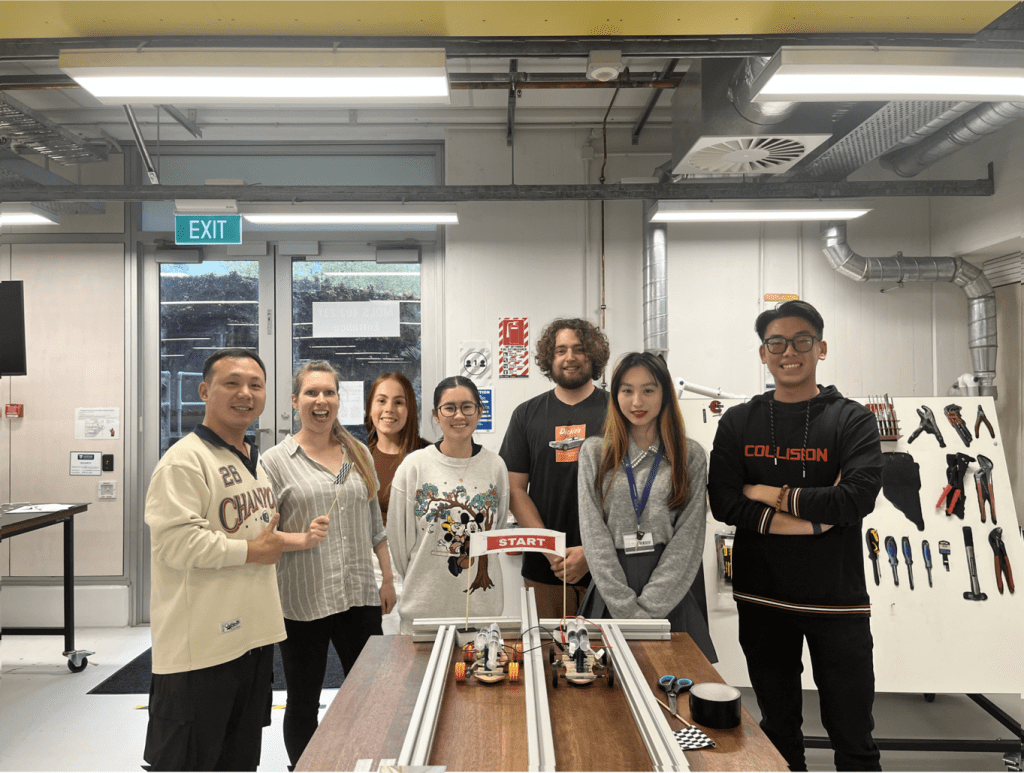Fueling Future Innovators: EMP’s Role in Engineering Education
Dr. Andrea Kolb, Professional Teaching Fellow in the Department of Chemicals and Materials Engineering at the University of Auckland, shares how the Entrepreneurial Mindset Profile® (EMP) is an essential part in helping her students achieve change.
EMP: So nice to talk with you today, Andrea! Tell us a little bit about your class and how you use the EMP.
Kolb: My class is called The Future of Energy, and it is for students who are seeking a degree in Chemical and Materials Engineering. The focus of the class is on how chemical engineers play a pivotal role in transforming our society from a non-renewable energy industry into a renewable energy industry in the context of global warming and climate change. Critical thinking and lateral thinking are key to achieve that. The class involves technical aspects such as how to use a 3D printer, for example, but we also want the students to grow as competent engineers and people, and that’s where the EMP comes into play: to recognize the skillset that is required as a successful entrepreneur or a manager, perhaps. In general, since it’s not solely about entrepreneurship, I tell my students that it’s in the context of leadership and how to be able to achieve change. I also work with a colleague from the Center of Innovation Entrepreneurship, Judith Marecek, who also is an EMP Certified Practitioner, so the students get a lot of support there as well. Judith is a guest lecturer and does Lego Serious Play with the class.
EMP: Can you explain the process for how the EMP is woven in during your class?
Kolb: The students have a deadline to take the EMP within the first three days of class, and then we look at the results in the second week of the course. I talk for about 20 minutes with student interaction explaining the background and why they have taken it, and then we explore their expectations and predictions of where they think they might have scored themselves. Once we have ramped up their engagement, I give them back their feedback reports and since it’s a relatively small class, and the students know each other well, very often they are quite free in exchanging their results with each other. Then I have them complete a survey in Canvas (the Learning Management System at the University of Auckland) which asks them to reflect on their highest/lowest scores, etc., and I use the questions in the Action Planning section of the EMP Development Guide as a guide here.
EMP: Tell us how you use the instrument in team projects.
Kolb: The students divide into teams of three to four based on which of the EMP Skills Scales they want to develop. I have six different engineering-related tasks that foster a particular scale:
Long-term Planning/Future Focus
Creativity/Idea Generation
Organizing and Planning/Execution
Self-belief/Self-Confidence
Flexibility/Optimism
Endurance/Persistence
I also have an outline for the students to follow for transferable skills for each of the scales that includes an Overview of Learning Outcomes, the Format (which includes all the assessments, workshops and labs), Project Goals, Supplementary Resources (which includes the tips from the EMP Development Guide), How to Do It (what the students need to do to achieve and master the intended learning outcomes of the course) and the Journey is the Reward (no right or wrong answers but the students need to explore). This last section is often new to Engineering students because they are used to having a specific problem with an equation and a singular mathematical result, and they rarely have done any reflective writing.
We have a total of four sessions about the EMP and skill development, labs, two reflective writing assignments and a Project Proposal which covers 1) both technical skill development to be used in their careers and 2) how to develop the particular skill that they’ve chosen and what their goals are. You provide so many resources in the Practitioner Portal that I just pick and choose which ones are best suited for my students.
One more thing about the group projects is that we have the People’s Choice Award. It is given by the students for the coolest, most exciting project that is voted on by their peers as being the most inspiring.
EMP: What do you think is the primary benefit of the EMP?
Kolb: Our students do a lot of reflection, writing in their journals and small-group exercises. We have them prototype their research, interview someone of interest to them and then they need to capture their learnings through a website. We also use Legos Serious Play which is a unique tool that prompts a lot of dialogue among students. It also helps them to be creative and distance themselves a bit from their EMP results while still being able to intentionally work on certain skills.
EMP: How have your students responded to the EMP?
Kolb: I think the primary benefit for students is broadening the understanding of themselves and their future career goals in the context of leadership. The report itself is such a great benchmarking tool. We’re talking about 21-22 year olds who are often hearing about these kinds of things for the first time, and like with any exercise, it’s really good to benchmark yourself first in order to set a goal. For example, I had one student who said, “Before this project, I feel as if I had the capability to use this skill but lacked the understanding of the importance of it, and why it needed to be actively practised in a team environment.”
EMP: Interesting! Have you had other students comment about the value as well?
Kolb: I received an email from a former student who talked about the impact of the EMP in their recent experience as an intern. They commented that they didn’t realize until later just how valuable the tool was in overcoming some of the challenges and hurdles they faced in the internship and mentioned things such as collaboration, problem solving, working independently, self-confidence, etc. I think the usefulness of what they learned in our class became much more apparent as they applied the concepts in a real job.
EMP: What a wonderful testimony to you and how you’ve helped the students to actually use what they’re learning! Andrea, do you do any kind of individual feedback sessions with the students?
Kolb: I do, but I do it within the context of their teams. I get their permission ahead of time to talk about their reports in this setting. It’s an important piece of the process because I can get a feel as to if and how they have embraced the concepts. If there is any misunderstanding or if they have gone off track or focused on the wrong thing, I can give them a second chance to reflect or help correct their comprehension. I also combine this with another assignment where they are asked to give peer feedback about their performance within the team with this prompt: “Imagine your teammate was your best friend. How could you help them to bring the best out of them?” This question often reinforces some of the positive things the students are already doing and helps them to coach each other about additional actions they could consider.
EMP: Is there any aspect of the EMP that you think provides the most value?
Kolb: For me, the ease of administration, the benchmarking, and the Development Guide are three aspects that are the most beneficial. I also use the EMP Scale Definition and Tips Sheet quite a lot as well because it’s such a great summary piece.
EMP: I know that you use a very engaging exercise with your students to address Idea Generation. Can you tell us a little bit about that?
Kolb: We have about 15 different shoe boxes with a variety of different contents where the students practice Idea Generation through designing and building a little plastic vehicle to transport 200 grams of rice grain. They have to come up with five different designs using items such as four wheels, a motor, a hydrogen fuel cell using purely water, an electrical source, etc. being as creative and innovative as possible. Then they take their final design to our engineering workshops where they go through additional processes such as 3D printing and laser cutting to prove that it works. And if it doesn’t, they have to show that they tried hard and gave it reasonable effort!
Dr. Andrea Kolb and CHEMMAT 304 students at the University of Auckland presenting their toy-sized hydrogen fuel cell vehicles.
EMP: I can only imagine how fun that activity must be! And yet they are learning so much at the same time. Anything else you want to add, Andrea, before we leave today?
Kolb: I just want to mention that I think the EMP is very useful for presentations at conferences or to participate in poster presentations. Having a psychometric assessment and showing how I use it within the context of coursework is very helpful. We also use a pedagogically sound assessment framework of Know It (Benchmarking), Grow It (different assignments to create a circular continuous improvement process) and Own It (hands-on experience leads to ownership and developing self-efficacy) which fits in beautifully with the EMP.
EMP: Thank you so much for your time today, Andrea. We really appreciate your unique insights for using the EMP and wish you and your students all the best in the future!
Andrea Kolb is a Professional Teaching Fellow in the Department of Chemicals and Materials Engineering at the University of Auckland and can be reached at [email protected].

The Entrepreneurial Mindset Profile® (EMP) [emindsetprofile.com] is an excellent way to get an in-depth view of the entrepreneurial mindset and see how your personality traits and skill sets compare to those of corporate managers and entrepreneurs. Available online, the EMP provides scores on 14 different scales including Risk Acceptance, Passion, Need to Achieve, Future Focus, Idea Generation and Persistence among others. The EMP Feedback Report comes with a debrief video and a comprehensive Development Guide for continuous improvement.
Want to learn more about EMP Certification and how you can use it in your organization? Email us at [email protected] or visit the Certification page of the EMP website to see how you can start using the EMP with your clients and students.


![Quote Bubble: "I think the primary benefit [of the EMP] for students is broadening the understanding of themselves and their future career goals in the context of leadership. The report itself is such a great benchmarking tool."](https://www.emindsetprofile.com/wp-content/uploads/2024/03/Andrea-Kolb-Quote-900-x-400-px-300x236.png)


